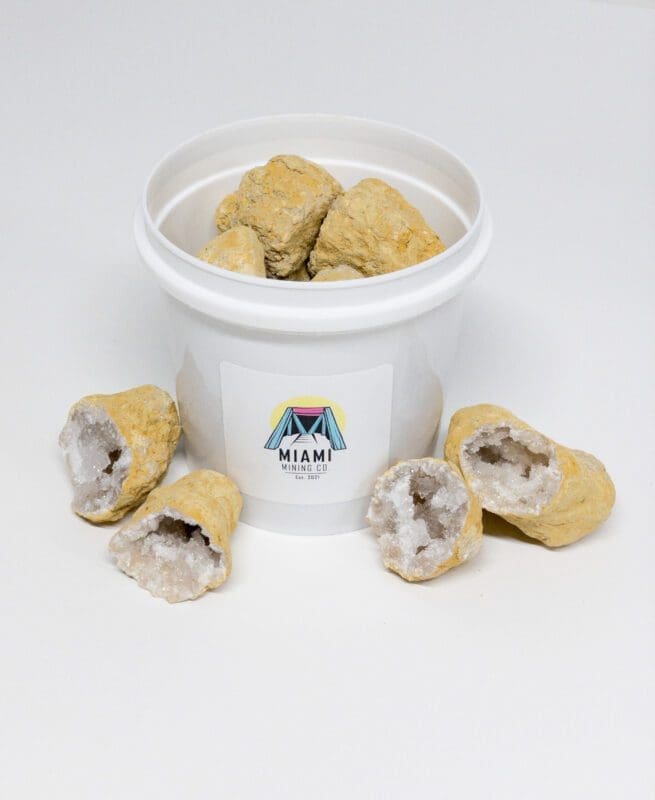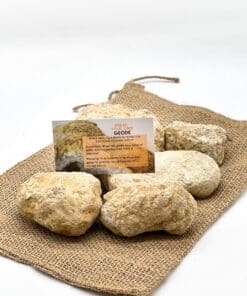What is a Geode?
Understanding Geodes
Geodes are among the most fascinating natural wonders, captivating those lucky enough to find or observe them. These nodular rocks, which can be discovered in various sizes ranging from tiny marbles to sizable basketballs, harbor a universe of minerals within. Typically found in arid regions, geodes are not just rocks; they’re windows into the earth’s geological processes, showcasing stunning crystals such as turquoise, quartz, calcite, and even fluorite.
The Formation of Geodes
The birth of a geode is a tale of transformation, beginning with minuscule particles in the moist and mineral-rich environments of springs or caves. Over time, as mineral-saturated water seeps through, it deposits layers of crystals inside these hollow rocks. The fluctuating water levels contribute to this intricate process, leaving behind a spectacle of crystal formations that continue to mesmerize scientists and enthusiasts alike.
Seeking Out Geodes
While arid landscapes are traditional geode hunting grounds, the advent of “Break Your Own Geode” kits has democratized the thrill of discovery. These kits, which offer a hands-on geological adventure, are an excellent starting point for novices. Yet, for those craving authenticity, locales like Plattsburgh in New York or the Lassen Volcanic National Park in California beckon with their natural geode deposits.
Geode Kits: An Educational Experience
Geode kits serve not only as a fun activity but also as an educational tool, especially for children. They encapsulate the excitement of geology, allowing kids and adults to unveil the hidden beauty within seemingly mundane rocks. Whether as a classroom project or a family activity, these kits pave the way for a deeper appreciation of earth sciences
America’s Geode Hotspots
The United States boasts numerous geode-rich locations, offering a tangible connection to the earth’s geological diversity. From the deserts of Arizona to the volcanic grounds of California, each site presents a unique geode-hunting experience, potentially rewarding explorers with their very own natural gem.
FAQ about Geodes
1. What are geodes? Geodes are unique geological rock formations that appear plain on the outside but are lined with crystals and other mineral formations on the inside. They can vary in size from as small as a marble to as large as a basketball.
2. How do geodes form? Geodes form in volcanic or sedimentary rocks when mineral-saturated water enters a cavity within the rock. As the water evaporates or cools, it leaves behind a layer of minerals. Over time, these layers build up to form the crystals inside the geode.
3. Where can you find geodes? Geodes can be found in arid and desert regions, particularly where volcanic rock and limestone are present. In the U.S., notable locations include Plattsburgh, New York; Custer County, South Dakota; Quartzsite, Arizona; and Lassen Volcanic National Park, California.
4. What minerals can be found inside geodes? Inside geodes, one can find a variety of minerals, such as quartz, amethyst, calcite, and even rare minerals like celestite and fluorite.
5. Can you purchase geodes? Yes, geodes can be purchased from rock and gem shops, online retailers, and at gem and mineral shows. “Break Your Own Geode” kits are also popular and can be bought online or in stores.
6. Are all geodes the same? No, each geode is unique in its composition, size, color, and crystal formation. The variety is what makes collecting geodes so exciting and rewarding.
7. How can you open a geode? Geodes can be opened using a geode cracker, a hammer and chisel, or even a regular hammer, though care should be taken to protect the eyes and to minimize damage to the crystal formations inside.
8. What is the educational value of geodes? Geodes are used in educational settings to teach about geology, mineralogy, and the earth’s processes. They can stimulate interest in science through hands-on learning and exploration.
9. Can finding geodes be a family activity? Absolutely! Searching for geodes can be a fun and educational outdoor activity for people of all ages. It encourages exploration and curiosity, and finding a geode can be thrilling for both children and adults.
10. What should you do if you find a geode in the wild? If you find a geode in the wild, you can keep it as a natural treasure. If it’s on private property, be sure to get permission from the landowner first. Once home, you can open it to discover the hidden crystals inside or display it in its natural state as a unique conversation piece.


